Antarctic station at the South Pole, "Amundsen - Scott" (20 photos)
 Bashny.Net
Bashny.Net
Amundsen-Scott station, named after the discoverer of the South Pole, is striking in its scale and technology. The complex of buildings around which thousands of kilometers there is nothing but ice is downright a separate world. We do not disclose all the secrets of science and research, but had an interesting tour of the residential blocks and showed how they live polar ...
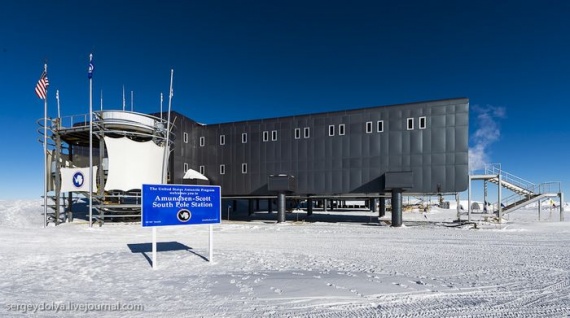
Initially, during the construction, the station was located exactly at the geographic South Pole, however, due to the movement of ice in a few years, the base has shifted in the direction of 200 meters:
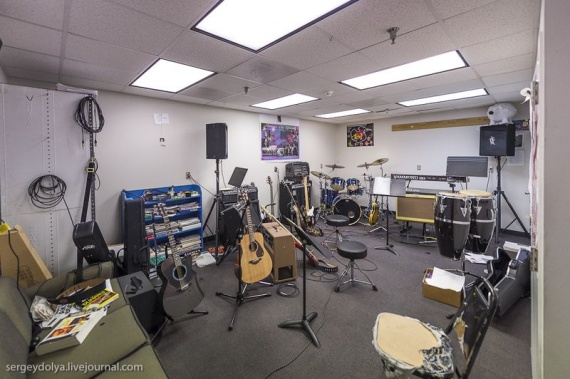
Initially, during the construction, the station was located exactly at the geographic South Pole, however, due to the movement of ice in a few years, the base has shifted in the direction of 200 meters:

It is our plane the DC-3. In fact, he was heavily modified by Basler and virtually all the stuffing in it, including avionics and engines, is new:
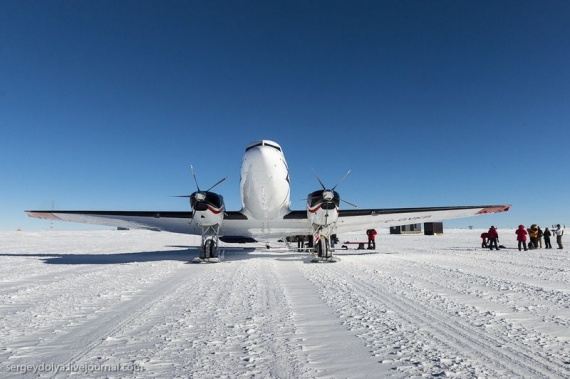
The plane can land on land and on the ice:
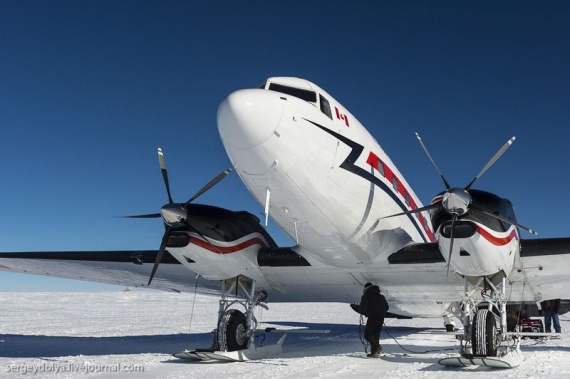
This photograph clearly shows how much the station is close to the historic South Pole (group of flags in the center). A single check box on the right - is the geographic South Pole:

On arrival we were met by an employee station and gave us a tour of the main building:
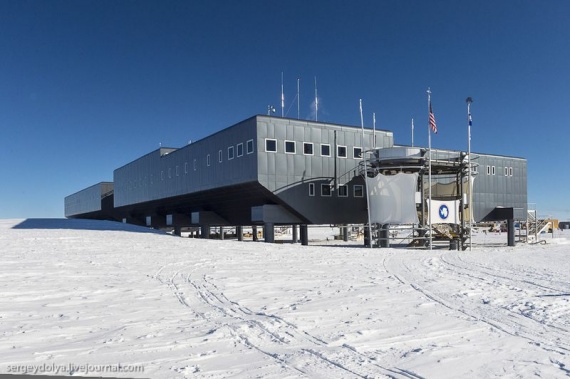
It stands on stilts, as well as many homes in the north. This is to ensure that the building does not melt the ice under him and "floated". In addition, the space below perfectly windswept (in particular, the snow under the station has not been cleaned even once since its erection):
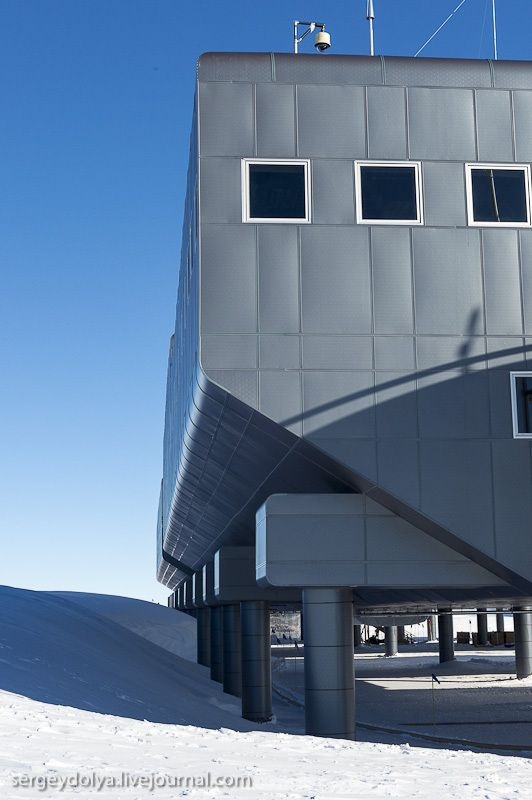
Log in to the station: you must climb two flights of stairs. Due to the fact that the air is thin, it is not easy to do:
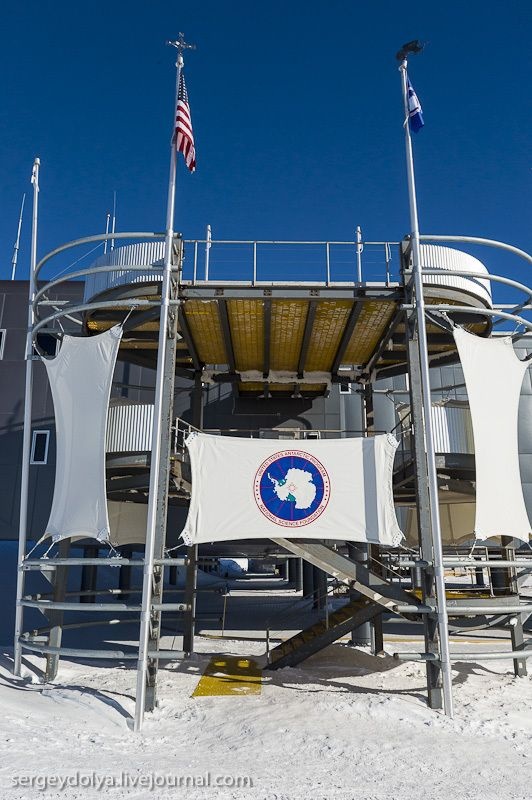
Housing Units:
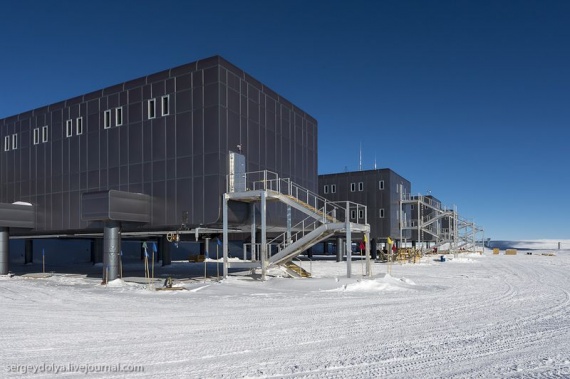
At the pole, during our visit, it was -25 degrees. We arrived in full regalia - three layers of clothing, hats, balaclava, etc. - And then we suddenly met a man in a light sweaters and Crocs. He said he used to: survived several winters and the maximum frost, which is found here - minus 73 degrees. Forty minutes before we walked around the station, he was walking in this form:

The station is within easy striking. Let's start with the fact that it has a huge gym. Popular games among employees - basketball and badminton. For heating stations use 10,000 gallons of jet fuel per week:

Some statistics: the station lives and works 170 people, 50 people remain in the winter food is free at the local canteen. They work 6 days a week, 9 hours a day. On Sunday the weekend. The cook off, too, and all tend to eat what was left uneaten in the refrigerator since Saturday:

There is room for music-making (on the title picture), and in addition to sports, a gym:
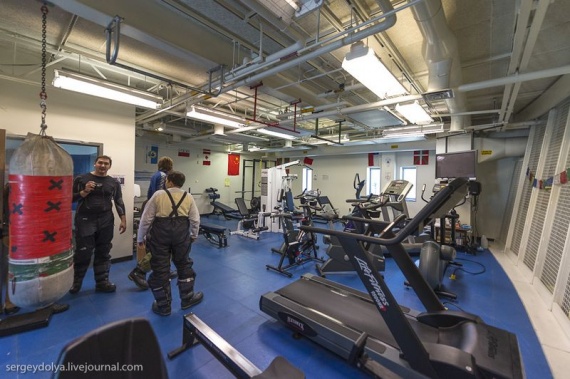
There is room for trainings, conferences and similar events. As we passed, it took Spanish lessons:

Two-storey station. On each floor it penetrates a long corridor. Right leaving residential units left - scientific and research:
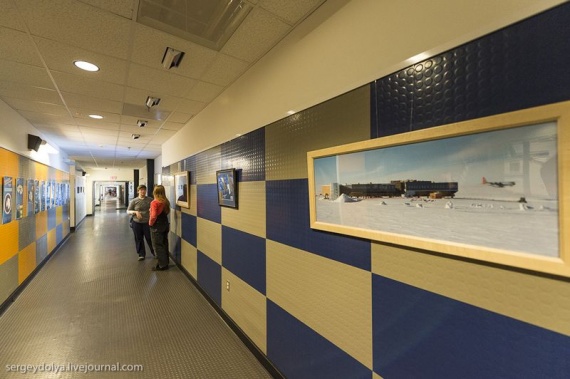
Meeting:
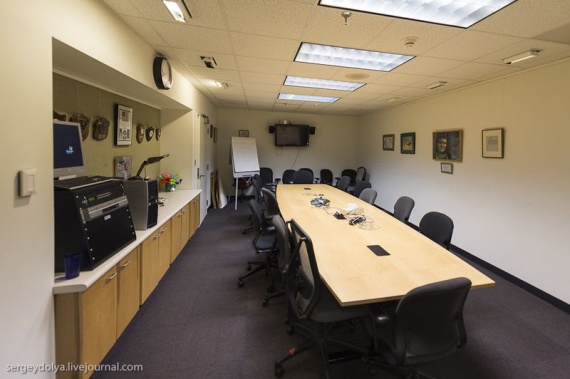
Near a balcony with views of the outbuildings station:

All that can be stored in unheated rooms, lies in these hangars:
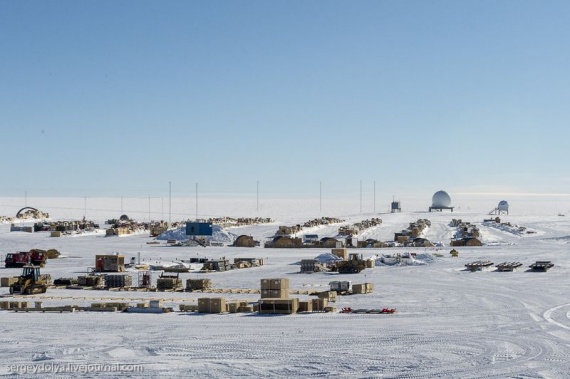
This neutrino observatory Ice cube, through which scientists catch neutrinos from space. In short this is so: the clash of neutrino and an atom produces particles known as muons, and a flash of blue light, called Vavilov - Cherenkov radiation. In clear arctic ice IceCube optical sensors can detect it. Usually neutrino observatories are digging the mine at depth and is filled with water, but the Americans have decided not to be penny wise and Ice cube built at the South Pole, where plenty of ice. Size Observatory - 1 cubic kilometer of here, apparently, the name. The cost of the project - $ 270 million:
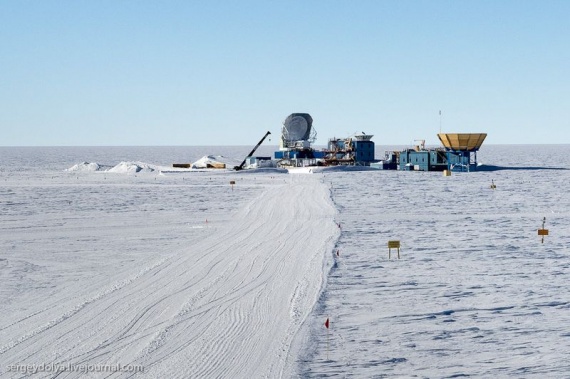
Source: sergeydolya.livejournal.com

Initially, during the construction, the station was located exactly at the geographic South Pole, however, due to the movement of ice in a few years, the base has shifted in the direction of 200 meters:

Initially, during the construction, the station was located exactly at the geographic South Pole, however, due to the movement of ice in a few years, the base has shifted in the direction of 200 meters:

It is our plane the DC-3. In fact, he was heavily modified by Basler and virtually all the stuffing in it, including avionics and engines, is new:

The plane can land on land and on the ice:

This photograph clearly shows how much the station is close to the historic South Pole (group of flags in the center). A single check box on the right - is the geographic South Pole:

On arrival we were met by an employee station and gave us a tour of the main building:

It stands on stilts, as well as many homes in the north. This is to ensure that the building does not melt the ice under him and "floated". In addition, the space below perfectly windswept (in particular, the snow under the station has not been cleaned even once since its erection):

Log in to the station: you must climb two flights of stairs. Due to the fact that the air is thin, it is not easy to do:

Housing Units:

At the pole, during our visit, it was -25 degrees. We arrived in full regalia - three layers of clothing, hats, balaclava, etc. - And then we suddenly met a man in a light sweaters and Crocs. He said he used to: survived several winters and the maximum frost, which is found here - minus 73 degrees. Forty minutes before we walked around the station, he was walking in this form:

The station is within easy striking. Let's start with the fact that it has a huge gym. Popular games among employees - basketball and badminton. For heating stations use 10,000 gallons of jet fuel per week:

Some statistics: the station lives and works 170 people, 50 people remain in the winter food is free at the local canteen. They work 6 days a week, 9 hours a day. On Sunday the weekend. The cook off, too, and all tend to eat what was left uneaten in the refrigerator since Saturday:

There is room for music-making (on the title picture), and in addition to sports, a gym:

There is room for trainings, conferences and similar events. As we passed, it took Spanish lessons:

Two-storey station. On each floor it penetrates a long corridor. Right leaving residential units left - scientific and research:

Meeting:

Near a balcony with views of the outbuildings station:

All that can be stored in unheated rooms, lies in these hangars:

This neutrino observatory Ice cube, through which scientists catch neutrinos from space. In short this is so: the clash of neutrino and an atom produces particles known as muons, and a flash of blue light, called Vavilov - Cherenkov radiation. In clear arctic ice IceCube optical sensors can detect it. Usually neutrino observatories are digging the mine at depth and is filled with water, but the Americans have decided not to be penny wise and Ice cube built at the South Pole, where plenty of ice. Size Observatory - 1 cubic kilometer of here, apparently, the name. The cost of the project - $ 270 million:

Source: sergeydolya.livejournal.com
Tags
See also
Tomorrow, New Horizons will approach Pluto in the minimum distance
"Office Romance". By filming locations
Ten most insects (10 photos)
Interesting facts about hydrogen fuel and vehicles powered by fuel cells
10 amazing facts about the time zones of our planet
Mysterious Antarctica
Time zones of the planet
The most terrible secret of Antarctica
Antarctic dollar.
50 amazing facts about the Earth

















